Sample Scope of Work Contracts
-
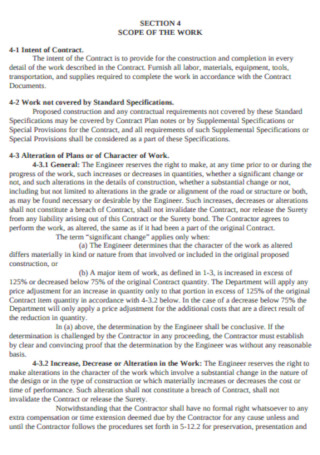
Sample Scope of Work Contract
download now -
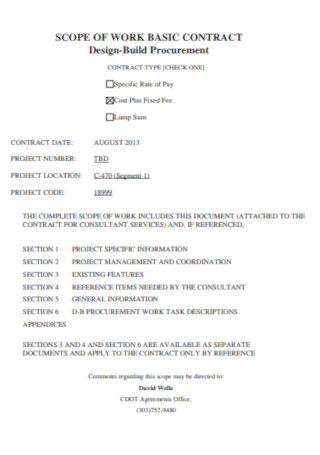
Basic Scope of Work Contract
download now -
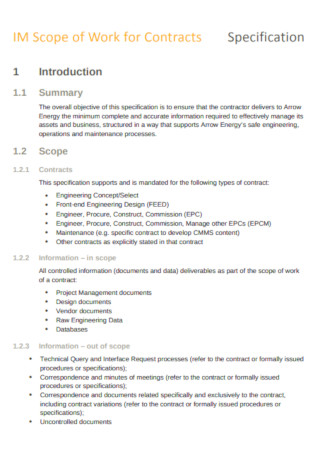
Simple Scope of Work for Contract
download now -
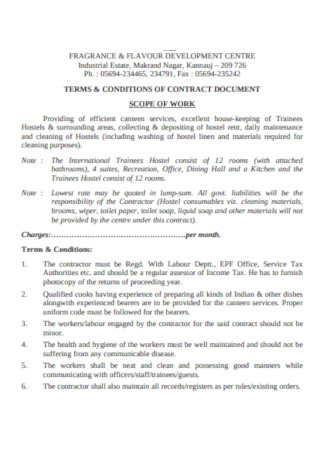
Formal Scope of Work Contract Template
download now -
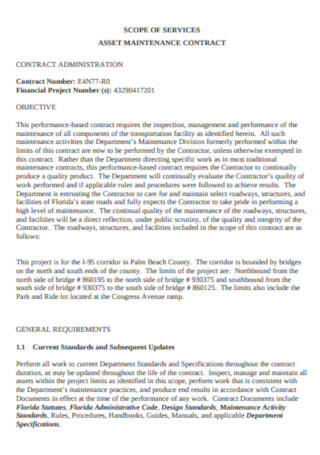
Scope of Project Work Contract
download now -
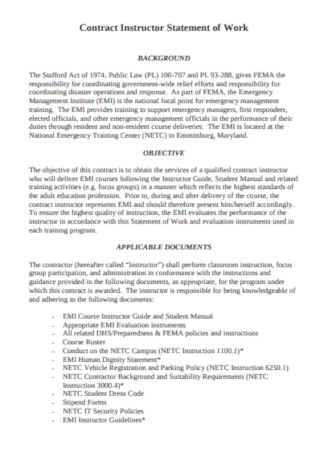
Contract Instructor Statement of Work
download now -
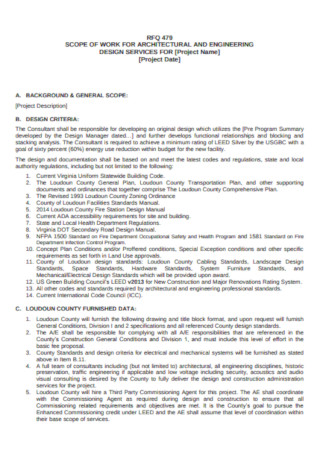
Standard Scope of Work Contract
download now -
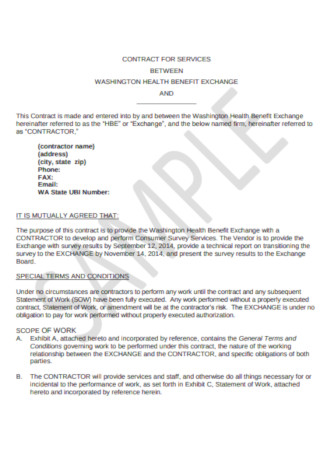
Scope of Service Exchange Contract Template
download now -
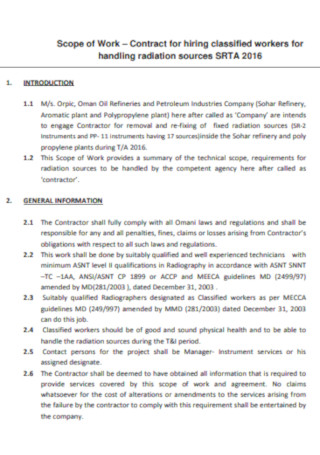
Printable Scope of Work Contract Template
download now -
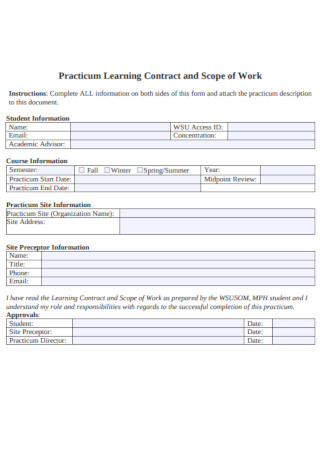
Practicum Learning Contract and Scope of Work
download now -
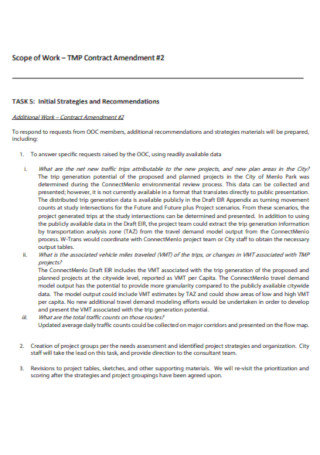
Scope of Work Contract Amendment Template
download now -
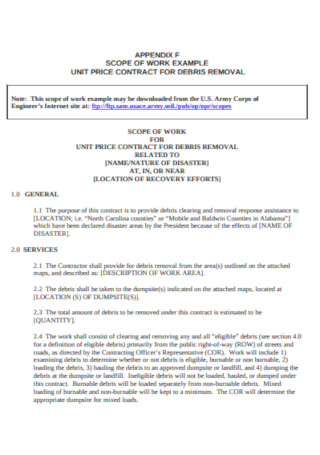
Scope of Work Unit Price Contract
download now -
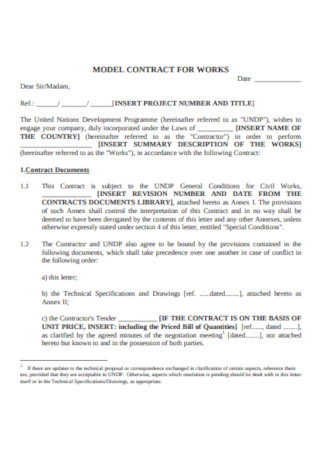
Scope of Model Work for Contract Template
download now -
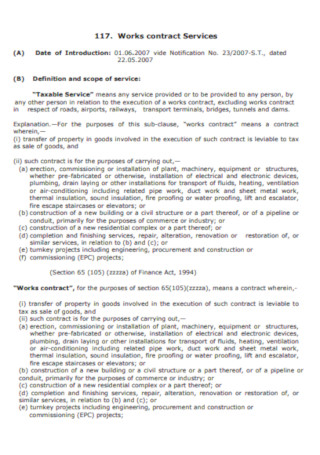
Scope of Service Work Contract
download now -
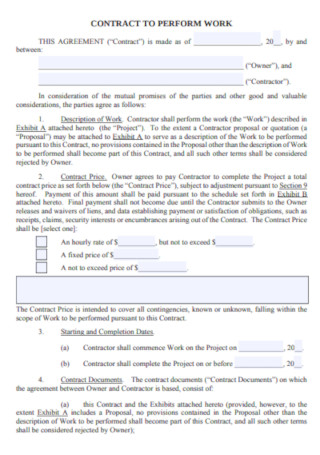
Scope of Work perform Contract Template
download now -
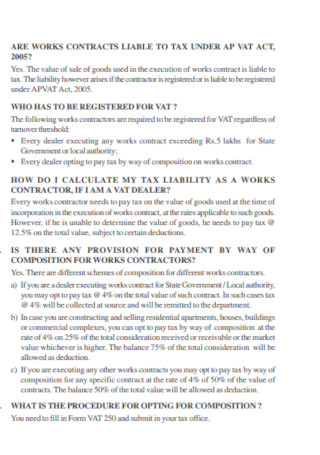
Scope of Treatment of Work Contract
download now -
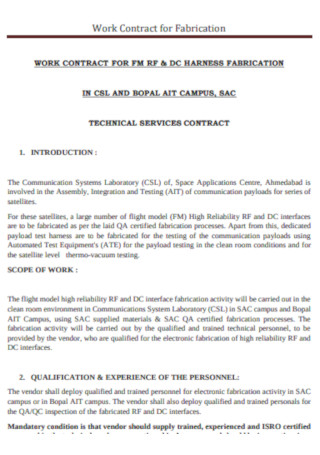
Work Contract for Fabrication Template
download now -
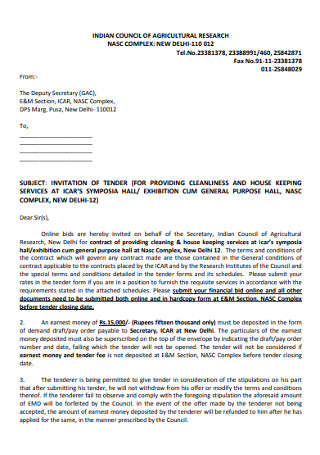
Scope of Job Work Contract Template
download now -
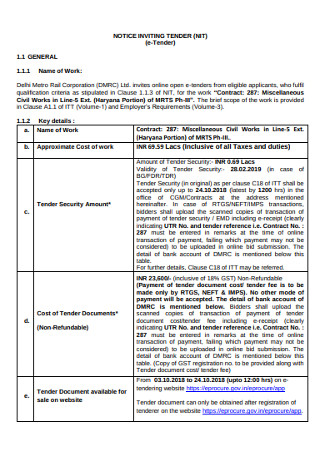
Scope of Civil Work Contract
download now -
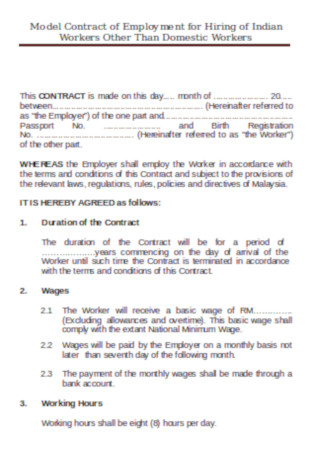
Domestic Workers Contract Template
download now
FREE Scope of Work Contract s to Download
50+ Sample Scope of Work Contracts
Sample Scope of Work Contracts
What Is a Scope of Work Contract?
Elements of an Exemplary Scope of Work Contract
Benefits of Making a Comprehensive Scope of Work Contract
Do’s and Don’ts for Developing a Detailed Scope of Work Contract
9 Steps for Creating an Effective Scope of Work Contract
FAQs
What is the importance of a scope of work contract?
Is the scope of work contract legally binding?
When should I write a scope of work contract?
50+ Sample Scope of Work Contracts
What Is a Scope of Work Contract?
A scope of work contract is an agreement between a contractor and a business which entails all the obligations of each party to one another. This document which is usually written by the contractor provides the range of activities that are needed to be done from the beginning up to the completion of the project at hand. Within a scope of work contract, specific milestones and goals are listed. Aside from these, project management reports and deliverable specifications are identified and discussed as well.
According to the survey conducted by the Project Management Institute, 397 percent of the respondents stated that the change in project objectives is one of the reasons why a project fails.
29 percent of them claimed that inadequate project vision and goal is also a factor why a project fails.
While another 29 percent said that the lack and poor management communication impacts the completion of a project.
Elements of an Exemplary Scope of Work Contract
Just like a work agreement contract, a scope of work contract also gives an idea of the things that you should be able to provide and deliver within a given time period set by the agreement. Hence, you have to make sure that the scope of work contract considered the different variables and factors which can impact the successful implementation of your project plans of action. In relation to this, listed below are the elements that can contribute to the development of an exemplary scope of work contract which can then result to the achievement of your desired project successes.
Benefits of Making a Comprehensive Scope of Work Contract
From software companies up to construction businesses, there are a lot of entities from different industries who can benefit from having a scope of work. With this being said, you can also expect these parties to experience a variety of advantages from having the specific document at hand. For you to appreciate a scope of work contract further, it is necessary for you to be aware and familiar with the ways on how it can be advantageous not only on your part but also for a number of other project stakeholders. Here are some of the benefits of making a comprehensive scope of work contract:
Do’s and Don’ts for Developing a Detailed Scope of Work Contract
Once specific terms have already been agreed upon, the scope of work contract can already be deemed as a legal document which binds the contractor and the business that will be getting their services. However, this does not mean that you should look into a scope of work contract as a proposal. Only create the document before you immediately commence project work. Hence, it is necessary for a contractor to make sure that the scope of work contract will only be developed once the actual sale has already been made and there is already a project work quote and timeline at hand. If you are planning to develop a scope of work contract, here are some of the things that you should and should not do:
Do’s
1. Do Make Sure That a Scope of Work Contract Contains a Project Schedule
It is necessary for your project team to be very particular with the timeliness of the project’s implementation. Create a project schedule which presents all the time frames for particular project activities. It is necessary for your scope of work contract to also be limited by time so you can promote urgency and precision when it comes to the timely precision of project deliverable and efficient execution of given project plans-of-action.
2. Do Use the Scope of Work to Directly Impress Your Customers or Clients
You have to let your customers or clients believe that you can do the work at hand. The scope of work contract, though putting your obligations to the bare minimum, should also encapsulate a message that you can provide all reasonable project expectations as long as all the requirements of the project are given on time. Make it clear that the scope of work contract is used not only to limit your call-to-actions but also to ensure that you can focus on providing the best and quality service to your clients even in the presence of different project constraints.
3. Do Ensure That Your Scope of Work Contract Is Thorough
When developing a scope of work contract, you have to be in-depth when presenting the details of your activities. You need to thoroughly show the steps that you will take and the strategies that you will use so you can deliver what is expected from you by different project stakeholders. Having a thorough and detailed scope of work contract is very important so you can optimize your project strengths while preparing for possible threats, risks, and problems that may arise within the project implementation period.
Don’ts
1. Don’t Develop a Scope of Work Contract by Just Relying on a Generic Template
If you will use a template to format your scope of work contract, it is essential for you to not only fill-up the items that are available in the pre-formatted template’s content. Make sure that you will modify the template accordingly so you can incorporate the specific items that are aligned with the needs and requirements of the project where you will use the scope of work contract document.
2. Don’t Make Your Scope of Work Contract Incomplete, Irrelevant, or Confusing
You have to be very particular with the comprehensiveness of the scope of work contract. Ensure that your content specifications are clear, complete, and relevant. Do not confuse any of your stakeholders by providing them a scope of work contract which is vague and is open for different kinds of interpretations. Guide your stakeholders accordingly by ensuring that your scope of work contract is of high-quality.
3. Don’t Use an Idealistic Scope of Work Contract
You always have to be realistic when making your scope of work contract. Do not provide any promise or value proposition which you cannot deliver. You also have to make sure that all of your requests and scheduling guidelines are measurable, time-bound, and specific. Even if you would like to impress your customers or clients, it is not right for you to give them appealing yet inaccurate information only to fail them at the end of the project life cycle.
9 Steps for Creating an Effective Scope of Work Contract
A scope of work contract should be able to provide an idea that you are the best contractor for the job that is needed to be done. With this, it is essential for you to make sure that you will create the best output as possible. You have to be very particular and keen with the elements that you will gather and put together to create your desired scope of work contract. More so, you also have to make sure that you are well-guided as you focus on developing of all the parts and segments of the specific document. Listed below is a step-by-step process guide that can help you create an effective scope of work contract document:
Step 1: Download a Scope of Work Contract Template that You Can Easily Customize
Use a template or any other document development and formatting guide so you can begin the creation of a scope of work contract. Aside from templates, you can also look into a number of existing scope of work contract samples so you can have an idea on how other entities have developed this specific type of contract document.
Step 2: Create an Introduction Which Contains the Title and Background of the Project
Introduce the project to your stakeholders. Write the title of the project on top of the document for proper identification purposes. After this, you can already give a background of what the project is all about and what it aims to achieve. You can share a number of concerns that should be addresses as well as some information about the contractor who will take care of these.
Step 3: Present Your Work Objectives and Goals
It is very important for a scope of work contract to contain the list of specific objectives that needs to be realized and goals that should be achieved within a given timeline. You have to make sure that all stakeholders have the same understanding of these items so to avoid miscommunication. Define your objectives and goals accordingly as this can set the achievement of the project’s vision in the right place.
Step 4: Identify the Estimated Value of the Project
Give an idea about the cost of the project. It is also necessary for you to present your financial and budget plan so that the clients or customers can prepare for it ahead of time. Aside from this, give an idea on when you must be paid for your services as a contractor. Present the works that will be done by your workforce so that the amount of money that you are requesting can be validated.
Step 5: Define All the Applicable and Necessary Considerations Needed to Support All Project Specifications
Present essential considerations, terms, conditions, and agreement clauses that should also be seen in the actual project contract. This can help you protect your rights as a contractor while also listing down all of your deliverable. Focus on the limitations that you have to consider as well as the range of activities that has to materialize when dealing with this segment of the scope of work contract.
Step 6: Describe the Business Environment In Which the Project Will Be Executed
It is essential for you to describe the business environment where the project is immersed in. Give an idea about specific conditions that must be looked into so that the project can be completed in a timely manner. It will be best if you can also showcase the schedule that the project team is following so the stakeholders can be updated with the things that are happening in and to the project from time to time.
Step 7: List Down All the Works That Are Needed to Be Done As Well as The Range of the Implementation of These
Have an in-depth presentation of the things that you need to deliver as a contractor. It is also important for you to identify the number of people that will be working for the project as well as the scope of the things that they should do. You have to review the employment contract or work contract of your project workforce so you can make sure that the specifications of the scope of work contract are aligned with the former document’s content. By doing this, you can eliminate the possibility of abusing your workforce when preparing for your project’s expected deliverable. Break down your call-to-actions into manageable pieces so you can become more specific with the things that are needed to be done in every stage or segment of the project’s implementation.
Step 8: Provide a Set of Contractor Resource Requirements
35% of projects fail because of inaccurate gathering of project requirements (source: workamajig). With this, it is important for you to ensure that all of the requirements of the contractor for the project to be realized based on project goals are specified and well-documented. List your financial needs, manpower requirements, equipment and tool specifications, and other things which can complete all the resources that will be utilized for the project at hand.
Step 9: Refine All the Information and Other Details Seen in the Scope of Work Contract Before You Create a Segment of Acceptance and/or Acknowledgement
Review the entire scope of work contract so you can still make necessary changes to improve the quality of the document. Remove any errors and do specific updates that can ensure the accuracy and precision of the document’s content. Polish the features and overall layout of the scope of work contract as well. Do not forget to let the contractor, the client, and all the other parties involved in the project to sign the scope of work contract. This is very essential in terms of ensuring that the content specifications of the document have been reviewed, approved, and acknowledged.
FAQs
What is the importance of a scope of work contract?
The scope of work contract is necessary because it outlines the range of tasks and activities that are needed to be achieved for project completion. It contains essential information, such as milestones, deadlines, deliverables, and expectations.
Is the scope of work contract legally binding?
Yes. The scope of work contract is legally binding because it presents highly-detailed information about a project that both parties, the client and the contractor, have agreed upon.
When should I write a scope of work contract?
The scope of work contract should be written and created before the building of a project. But, writing it should not be done while a client is still thinking and deciding on what they want for the project. That is why it is essential to discuss first the terms before creating the scope of work contract.
Using a scope of work contract can help you clarify the work that is needed to be done within a given time period to all parties involved. By having this document, it will be easier for you to make sure that all stakeholders are in the same page and same level of understanding. Hence, setting the right expectations can be made easier since you have a physical reference to share to other entities. Are you ready to create a scope of work contract on your own? If you need more references for this activity, make sure to check out the downloadable templates and samples that we have listed in this post just for you.
